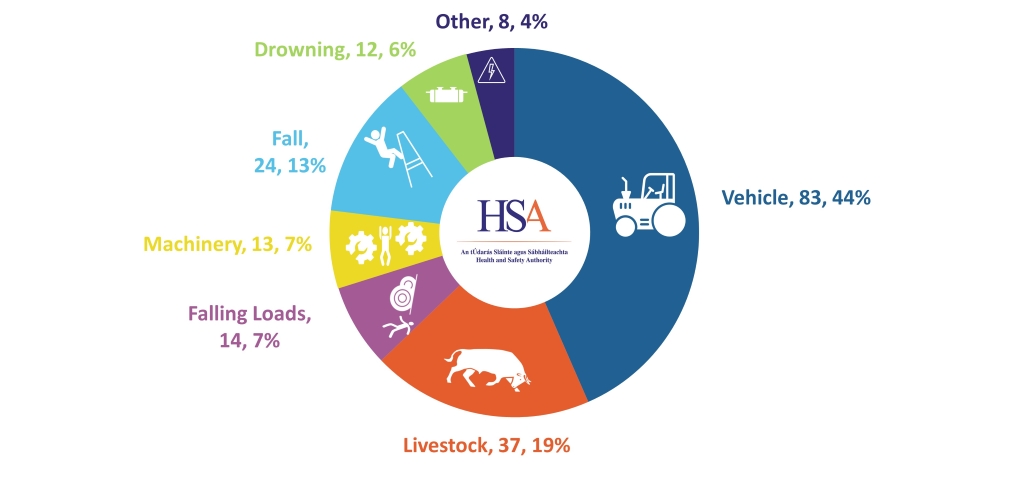Precautions & Risk Assessment
Safety Statement and Farm Safety Code of Practice
- Prepare and implement a Safety Statement
- If three or less people work on the farm, the Code of Practice, including Risk Assessment Document meets the legal requirement to prepare a Safety Statement
- There's an electronic Risk Assessment available to use as part of the Code of Practice
Precautions
- Plan work to make sure it can be done safely
- Check machinery and equipment before use
- Communicate with family, workers and contractors to make sure that tasks and safeguards are understood
- Train persons to operate tractors and machinery and complete jobs safely
- Assess and control risks to children and persons with slower reaction times. Do not allow children unsupervised access to the farmyard
Triggers associated with fatal farm injuries 2014-2023 (Total Fatalities: 191)
Online Risk Assessment
If you have 3 or less people working on your farm you can use the Farm Safety Code of Practice to comply with your legal requirement to have a Safety Statement.
This electronic version of the Risk Assessment document allows you to fill in and save the risk assessment electronically. It will store your risk assessment which you can look at and update at any time by logging onto www.farmsafely.com. If you have to log out before you complete the risk assessment your work will be saved and it will bring you back to the same stage when you log back in. When complete and you set out what you need to take action on you can print out your farm safety action plan.
A full set of FAQs can be found on the Online Risk Assessment tool.
This Electronic Risk Assessment Tool will not be used by the Authority to plan inspections.
The online risk assessment contains an introduction, nine sections and an action list. Each section contains some information about hazards and risks on the farm and statistics on farming accidents. You should read the information at the start of each section before attempting the risk assessment. Following this you will find a risk assessment in the form of a list of questions on that hazard on your farm and some initial safety controls you should put in place. Consider each control and see if it is applicable to the hazard. Finally, you should add any additional controls that you see as appropriate on your farm
This electronic risk assessment has several advantages
- You can find your Code of Practice Risk Assessment easily
- It maintains a record of when you did your risk assessments
- You can plan and print out your safety action list
- You will get e-mails reminding you of actions you need to take and when you need to do your annual risk assessment review
- You can get safety alerts
Personal Protective Equipment (PPE)
|
 |
- Wear appropriate safety gloves to protect the hands from cuts and from contact with harmful substances
- Ear protectors help to protect your hearing from loud sudden noise or from continuous loud noise. Hearing once damaged cannot be repaired
- Face protection visors protect your full face from flying objects, sparks and splashes
- Dust masks protect you from inhaling harmful dusts. The mask must fit tightly around the face to avoid leaks. One exposure to harmful dusts can make you allergic to that dust and cause long term health problems
- Wear overalls to protect your body from coming into contact with harmful substances



